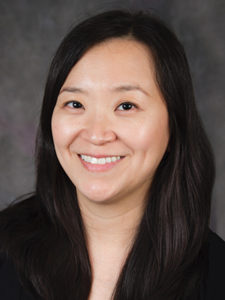
New findings about myositis, including new classification and diagnostic criteria along with new data on overlap with other autoimmune conditions, are changing the ways clinicians assess and manage the disease.
“There are reports that up to 40 percent of patients with idiopathic inflammatory myopathies can have an overlap connective tissue disease,” said Julie Paik, MD, MHS, Assistant Professor of Medicine at The Johns Hopkins Myositis Center. “That is especially important because these patients with overlap between myositis and other autoimmune conditions tend to have a more severe phenotype. Recognizing the potential for overlap early is crucial so that you can institute early treatment and earlier screening for other potential complications.”
Dr. Paik will explore the growing field of myositis overlap during the ACR symposiumHot Topics in Myositis on Sunday from 4:30 – 6:00 pm in Room W375c.
Andrew Mammen, MD, PhD, Leader of the Muscle Disease Unit and Principal Investigator at the Laboratory of Muscle Stem Cells and Gene Regulation at the National Institute of Arthritis and Musculoskeletal and Skin Diseases, will discuss the latest findings in inclusion body myositis. Ingrid E. Lundberg, MD, Professor of Medicine at the Karolinska Institutet in Sweden, will discuss the latest classification criteria for inflammatory myositis from the European League Against Rheumatism (EULAR) and the ACR.
The first classification criteria for inflammatory myopathy were written in 1975, Dr. Lundberg said, and are out of date despite several revisions over the decades. Earlier criteria were largely empiric and not well validated. EULAR and the ACR began devising the first joint classification criteria in 2004.
The newest EULAR/ACR classification criteria for myositis are data driven, developed as an interdisciplinary collaboration, and based on a probability model, Dr. Lundberg said. Future clinical trials are expected to use these criteria, which should lead to novel therapeutics in different forms of myositis.
Dr. Paik said that there are four primary myositis subgroups: polymyositis, dermatomyositis, inclusion body myositis (IBM), and immune mediating necrotizing myopathy. Few clinicians realize that all of these subtypes of myositis can overlap with many different autoimmune diseases, including scleroderma or lupus. When they do encounter overlap, managing both conditions becomes a challenge.
In fact, Dr. Paik noted, those who have muscle involvement in systemic sclerosis tend to have a poor outcome. Overlap remains very much an underappreciated manifestation of systemic sclerosis.
“Treatment choices depend of which organs are involved and which set of symptoms are driving the disease process,” she said. “All the while, it is important to be mindful of potential complications in overlap patients, such as the risk of renal crisis when required to use steroids to treat overlap myositis in systemic sclerosis.”
The potential impact of new classification criteria offers a bright side. Evolving criteria makes it easier to identify specific phenotypes and easier to tailor treatment to individual needs. A number of myositis drug trials are in progress, Dr. Paik said, and clinicians are likely to see a significant improvement in therapeutic alternatives in particular in dermatomyositis. She has hope that these novel therapeutics may also potentially be used in treatment of overlap myositis, but future studies will be required to answer this possibility.
Myositis may not yet be curable, but it is something that can be treated and effectively managed. The single most important element in managing myositis and myositis overlap is early detection and treatment.
“When you have two concomitant autoimmune conditions, if you don’t treat early, you are dealing with more complications later on because you are not dealing with one disease entity, but two,” Dr. Paik said. “And while there are no data that support a synergistic interaction in patients with myositis overlap, it seems like that is the case from a clinical perspective.”
